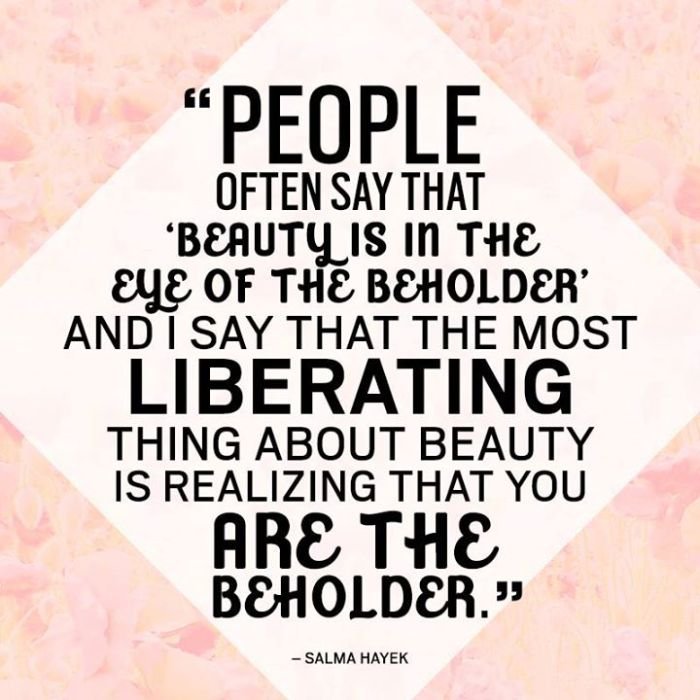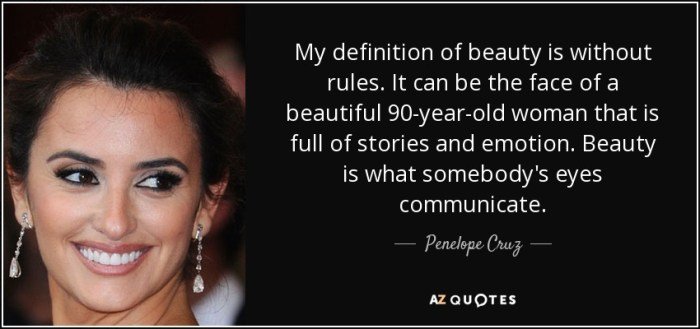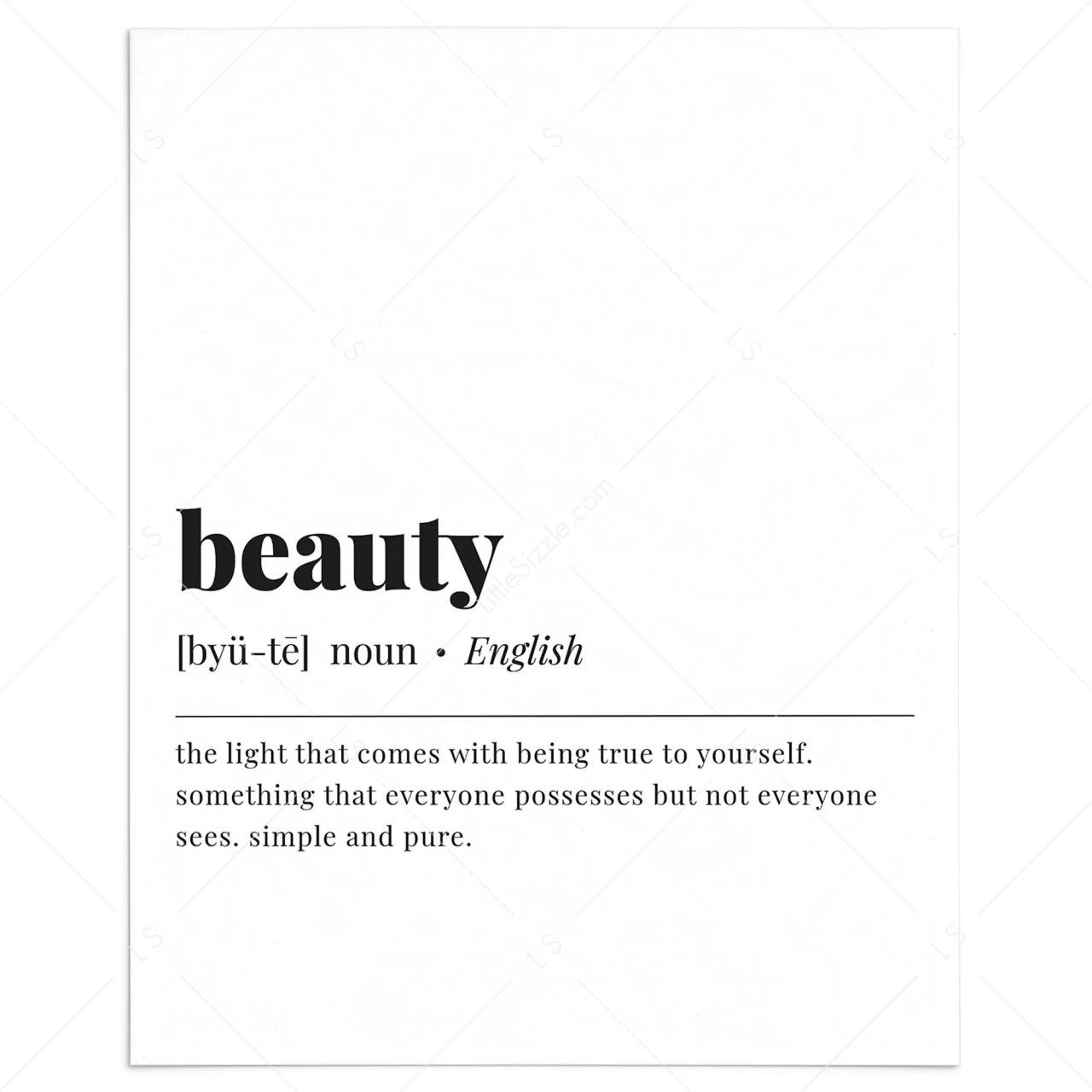Formless beauty invites us to see beyond traditional notions of aesthetics, embracing the inherent beauty found in the absence of defined form. This concept transcends artistic disciplines, revealing itself in the swirling patterns of a Jackson Pollock painting, the minimalist simplicity of a Donald Judd sculpture, and the ephemeral grace of a cloud drifting across the sky.
From the ancient philosophies of Lao Tzu to the contemporary explorations of ambient music, formless beauty challenges our perception of what constitutes beauty, prompting us to appreciate the inherent elegance in the seemingly chaotic and the profound significance in the seemingly empty.
Formless Beauty in Art

Formless beauty, a concept that challenges traditional notions of aesthetics, finds its expression in art forms that defy conventional structures and shapes. This exploration delves into the world of art where beauty emerges not from predefined forms but from the essence of abstract expression, minimalist simplicity, and the expressive power of the formless.
Abstract Art and Formless Beauty
Abstract art, with its departure from representational imagery, offers a unique platform for exploring formless beauty. Artists like Jackson Pollock, a pioneer of Abstract Expressionism, embraced the fluidity and spontaneity of the creative process, allowing paint to drip and flow across the canvas, creating a tapestry of colors and textures.
Pollock’s drip paintings, characterized by their lack of recognizable forms, embody formless beauty by emphasizing the expressive power of the artistic gesture. The viewer is invited to engage with the canvas not as a representation of the external world but as an abstract expression of the artist’s inner world.
Minimalist Sculpture and the Challenge to Traditional Beauty
Minimalist sculpture, with its emphasis on simplicity and geometric forms, presents a stark contrast to traditional notions of beauty. Artists like Donald Judd, a leading figure in Minimalism, created sculptures that were devoid of ornamentation or narrative content. Judd’s minimalist sculptures, often made from industrial materials like steel and aluminum, challenge the viewer to find beauty in the inherent qualities of the materials themselves and in the purity of their geometric forms.
These sculptures, by stripping away all extraneous elements, invite contemplation on the essence of form and the beauty that can be found in simplicity.
Formless Beauty in Japanese Calligraphy and Western Abstract Expressionism
The formless beauty found in traditional Japanese calligraphy and modern Western abstract expressionism, while seemingly disparate, share a common thread: the expression of the artist’s inner world through the medium of line and form. Japanese calligraphy, with its emphasis on brushstrokes and ink flow, embodies the concept of “wabi-sabi,” a philosophy that celebrates the beauty of imperfection and transience.
The calligrapher’s brushstrokes, often characterized by their spontaneity and irregularity, create a visual language that speaks to the artist’s emotions and inner state. Western abstract expressionism, with its emphasis on gestural abstraction and the exploration of color and texture, shares this emphasis on the expression of the artist’s inner world.
The formless beauty of both forms lies in the artist’s ability to convey emotion and meaning through the fluidity and expressiveness of their brushstrokes.
Formless Beauty in Nature

The concept of beauty often conjures images of symmetry, balance, and defined shapes. However, nature, in its boundless diversity, often defies these conventional notions, revealing a different kind of beauty – formless beauty. This beauty lies in the inherent fluidity, dynamism, and impermanence of natural phenomena, captivating our senses and inspiring awe.
Formless Beauty in Natural Phenomena
Formless beauty in nature manifests in various ways, often challenging our perception of what constitutes aesthetic appeal. Examples of such beauty can be found in the ever-changing forms of clouds, the rugged peaks of mountains, and the relentless surge of ocean waves.
- Clouds:Clouds, with their ever-shifting shapes and ethereal textures, exemplify formless beauty. Their constantly evolving forms, from wispy cirrus to dense cumulus, create a mesmerizing dance across the sky. Their fleeting nature, disappearing as quickly as they appear, adds to their ephemeral beauty.
- Mountains:Mountains, with their towering peaks and rugged terrain, showcase the raw power and untamed beauty of nature. Their formlessness lies in the absence of defined edges and the presence of jagged, irregular shapes. The interplay of light and shadow across their surfaces further enhances their visual appeal.
- Ocean Waves:Ocean waves, with their rhythmic ebb and flow, embody the dynamic and unpredictable nature of the sea. Their formless beauty lies in their ever-changing forms, from gentle swells to crashing breakers. The sound of waves crashing against the shore creates a symphony of nature, further enriching the experience.
Wabi-Sabi and the Impermanence of Beauty
The Japanese aesthetic philosophy of “wabi-sabi” emphasizes the beauty found in imperfection, transience, and the natural cycle of decay. It celebrates the inherent beauty of things that are imperfect, incomplete, and impermanent. This concept resonates with the formless beauty found in nature, as it acknowledges the inherent beauty in the constant state of change and impermanence.
- Imperfection:Wabi-sabi embraces imperfections as part of the natural order. It recognizes that flaws and irregularities are not detractions from beauty but rather add to its character and depth. This concept can be applied to the formless beauty of nature, where imperfections, such as cracks in rocks or weathered tree trunks, contribute to their unique charm.
- Transience:Wabi-sabi emphasizes the transient nature of life and beauty. It acknowledges that all things are impermanent and subject to change. This concept is evident in the formless beauty of natural phenomena, such as the fleeting beauty of a sunset or the ephemeral nature of a flower in bloom.
Formless beauty can be found in the most unexpected places, like the swirling patterns of clouds or the rough texture of a weathered tree. It’s a reminder that perfection isn’t always about symmetry and structure. And just like the natural world, our own lives are full of unpredictable beauty.
If you’re looking for ways to enhance your well-being and find your own formless beauty, you can explore resources like my hr cardinal health , which offers information on health, fitness, and overall well-being. This can be a great starting point for discovering your own unique path to a fulfilling life.
- Natural Cycle of Decay:Wabi-sabi also embraces the natural cycle of decay and decomposition. It recognizes the beauty in the process of aging and the inevitable passage of time. This concept can be applied to the formless beauty of nature, where the decaying leaves of a tree or the weathered bark of a tree contribute to their overall aesthetic appeal.
Formless Beauty in Nature: A Table of Examples
| Natural Phenomenon | Formless Qualities | Emotional Response | Cultural Significance |
|---|---|---|---|
| Clouds | Ever-shifting shapes, ethereal textures, fleeting nature | Awe, wonder, contemplation | Clouds have been a source of inspiration for artists, poets, and musicians throughout history. They are often associated with dreams, imagination, and the sublime. |
| Mountains | Towering peaks, rugged terrain, jagged, irregular shapes | Awe, respect, a sense of the sublime | Mountains are often seen as symbols of strength, resilience, and spiritual power. They have played a significant role in many cultures and religions. |
| Ocean Waves | Rhythmic ebb and flow, ever-changing forms, crashing breakers | Tranquility, energy, a sense of the vastness of nature | The ocean has been a source of fascination and mystery for humans since the beginning of time. It is often associated with power, freedom, and the unknown. |
Formless Beauty in Literature

Formless beauty in literature often transcends traditional structures and conventions, embracing the power of language to evoke emotion, create meaning, and inspire reflection. This form of beauty is not confined to specific poetic forms or narrative structures but instead arises from the skillful use of language, imagery, and symbolism.
Exploring Formless Beauty in Literary Works
Examples of formless beauty can be found in various literary works, where writers challenge conventional forms and embrace the fluidity of language to express profound emotions and ideas. For instance, William Blake’s “The Clod and the Pebble” explores the concept of beauty through a simple dialogue between two contrasting entities.
Formless beauty is often found in the unexpected, like the way a cloud dances across the sky or the way a raindrop falls onto a leaf. This kind of beauty can also be found in the dedication to personal growth, like at onelife fitness perimeter , where individuals work towards their physical and mental well-being.
The journey of transformation, whether it’s in nature or in the gym, is a beautiful reminder that beauty isn’t always about perfection, but about the process of becoming.
The Clod, representing humility and acceptance, views the world with a sense of wonder and awe, while the Pebble, symbolizing pride and arrogance, sees only limitations and imperfections. Blake’s poem, devoid of traditional poetic structures, evokes a profound sense of beauty through its stark simplicity and powerful imagery.Similarly, Emily Dickinson’s poetry, often characterized by its unconventional use of punctuation, capitalization, and rhyme schemes, exemplifies formless beauty.
Her poems, though seemingly unstructured, are filled with evocative imagery, symbolism, and a profound sense of the sublime. Dickinson’s “Because I could not stop for Death” is a prime example of how formless beauty can be achieved through the use of unconventional structures and powerful imagery.
“Because I could not stop for Death,He kindly stopped for me;The carriage held but just ourselvesAnd Immortality.”
Dickinson’s poem, through its seemingly simple structure, evokes a profound sense of the sublime and the mystery of life and death. The poem’s beauty lies not in its adherence to traditional forms but in its ability to capture the essence of human experience through the use of vivid imagery and symbolic language.
Formless Beauty in Music

Music, often structured by melody, rhythm, and harmony, can also embrace formless beauty, where the absence of traditional structures creates a unique and captivating experience. This formlessness allows for exploration of sonic textures, emotional depths, and the boundless possibilities of sound.
Formless Beauty in Ambient and Experimental Music
Ambient and experimental music often defy traditional musical structures, embracing a sense of openness and fluidity. These genres prioritize atmosphere and sonic exploration over conventional song structures, creating a space for the listener to immerse themselves in a soundscape without defined boundaries.
“Ambient music must be able to exist alongside other sounds, and not demand attention. It must be as non-invasive as possible.”
Brian Eno
Improvisation in Jazz and Classical Music
Improvisation plays a crucial role in both jazz and classical music, offering opportunities for musicians to create moments of formless beauty. Jazz musicians, known for their spontaneous interplay, often explore unexpected melodic and harmonic paths, resulting in unpredictable and captivating performances.
Similarly, classical composers have incorporated improvisational elements into their works, allowing performers to interpret and shape the music in real time.
- Jazz: In jazz, improvisation is a cornerstone, allowing musicians to express their creativity and individuality within a musical framework. Soloists navigate through chord changes, exploring new melodic ideas and harmonic possibilities. This spontaneous interaction between musicians creates a dynamic and unpredictable musical experience, where the formless beauty arises from the unpredictable nature of improvisation.
- Classical Music: While classical music is often associated with strict adherence to scores, improvisation has played a significant role in its history. For example, Baroque composers like Johann Sebastian Bach encouraged improvisation in their works, allowing performers to embellish melodies and explore variations.
In contemporary classical music, composers like John Cage have embraced the concept of indeterminacy, allowing performers to make choices during performance, resulting in unique and unpredictable interpretations.
Sound Effects and Texture in Electronic Music
Electronic music often utilizes sound effects and texture to create a sense of formless beauty. By manipulating sounds electronically, producers can create a wide range of sonic landscapes, from ethereal atmospheres to disorienting soundscapes. This manipulation of sound allows for the creation of unique textures and atmospheres, contributing to a sense of formless beauty.
- Sound Effects: Electronic music often incorporates a wide array of sound effects, ranging from synthesized sounds to manipulated recordings. These effects can be used to create textures, atmospheres, and sonic events that defy traditional musical structures. The manipulation of sound allows for the creation of unique and unexpected sonic experiences, contributing to a sense of formless beauty.
- Texture: Texture in electronic music refers to the overall sonic quality of a piece, encompassing the interplay of different sounds, their timbres, and their arrangement in the soundscape. Electronic producers can create a wide range of textures through layering, manipulation, and processing of sounds, resulting in sonic landscapes that are both immersive and evocative.
This focus on texture allows for the creation of a sense of formless beauty, where the overall sonic experience is more important than traditional musical structures.
Formless Beauty in Philosophy

The pursuit of beauty often involves the appreciation of form and structure. However, philosophers throughout history have explored the concept of formless beauty, recognizing beauty in the absence of defined shapes and structures. This exploration often delves into the essence of existence, the nature of reality, and the relationship between the observer and the observed.
Formless Beauty in Taoist Philosophy
Taoist philosophers like Lao Tzu and Zhuangzi emphasized the importance of the Tao, a concept that can be understood as the natural order of the universe. The Tao is often described as formless and ever-changing, representing the fundamental essence of all things.
This formlessness is considered beautiful in its simplicity, spontaneity, and natural flow.Lao Tzu, in his seminal work “Tao Te Ching,” emphasizes the beauty of formlessness in the following passage:
“The Tao that can be told is not the eternal Tao; The name that can be named is not the eternal name. The nameless is the beginning of heaven and earth; The named is the mother of ten thousand things.”
This passage highlights the inherent limitations of language and conceptualization in capturing the true essence of the Tao, which is formless and beyond human comprehension. It is through embracing this formlessness that one can experience true beauty.Zhuangzi, another influential Taoist philosopher, further explores the concept of formlessness through his paradoxical stories and anecdotes.
He emphasizes the importance of letting go of rigid structures and embracing the fluidity and spontaneity of existence. For Zhuangzi, beauty lies not in defined forms but in the inherent interconnectedness and flow of all things.
Formless Beauty in Buddhist Philosophy
Buddhist philosophy, particularly Zen Buddhism, also emphasizes the concept of formlessness. The concept of “emptiness” (śūnyatā) is central to Buddhist thought. It is not to be understood as a void or nothingness but rather as the absence of inherent self-nature or fixed essence.
This “emptiness” is not a lack of beauty but rather a source of boundless potential and creative expression.The beauty of “emptiness” lies in its ability to transcend the limitations of form and structure. It is in this formlessness that true beauty, characterized by spontaneity, impermanence, and interconnectedness, can be experienced.
Philosophers and Formless Beauty
| Philosopher | Key Concept | Relation to Formless Beauty |
|---|---|---|
| Lao Tzu | Tao | The Tao is formless, representing the natural order of the universe. Beauty lies in its simplicity, spontaneity, and natural flow. |
| Zhuangzi | Formlessness and spontaneity | Emphasizes letting go of rigid structures and embracing the fluidity and spontaneity of existence. Beauty lies in the inherent interconnectedness and flow of all things. |
| Buddhist Philosophy | Emptiness (śūnyatā) | Emptiness is not a lack of beauty but rather a source of boundless potential and creative expression. Beauty lies in its ability to transcend the limitations of form and structure. |
Formless Beauty in Everyday Life

The pursuit of beauty often leads us to grand landscapes, exquisite art pieces, or intricate musical compositions. However, formless beauty can also be found in the ordinary, in the seemingly mundane aspects of our daily lives. This type of beauty, often subtle and understated, resides in the imperfections, textures, and fleeting moments that make up the fabric of our existence.
Wabi-Sabi and the Appreciation of Imperfection
The Japanese aesthetic philosophy of “侘寂” (wabi-sabi) offers a framework for appreciating the beauty of imperfection and transience in everyday life. It embraces the inherent flaws, cracks, and marks of time as evidence of a life lived and a story told.
Formless beauty can be found in unexpected places, like the intricate patterns of a cloud formation or the raw power of a crashing wave. Similarly, a gym like Crunch Fitness Buford can offer a unique kind of beauty, not in its polished appearance, but in the dedication and sweat of those striving for their personal best.
The formless beauty of human potential shines brightest when we push ourselves to new limits, and a gym like Crunch can be the perfect environment to cultivate that strength.
This philosophy encourages us to find beauty in the weathered patina of an antique, the faded colors of a vintage photograph, or the natural imperfections of a hand-crafted object.
“Wabi-sabi teaches us to see the beauty in the impermanence of all things. It encourages us to find joy in the fleeting moments of life, and to accept the inevitability of change.”
Leonard Koren
Formless Beauty in the Mundane
- The Texture of Weathered Wood:The rough, uneven surface of weathered wood tells a story of time and exposure to the elements. Its cracks and crevices, the subtle variations in color, and the feel of its grain evoke a sense of history and natural beauty.
- The Sound of Rain:The rhythmic patter of raindrops on a windowpane or a rooftop can be incredibly soothing and evocative. The sound of rain, with its gentle and repetitive nature, can create a sense of peace and tranquility, reminding us of the cyclical nature of life.
- The Light Filtering Through Tree Branches:The interplay of sunlight and shadows created by the branches of a tree can be mesmerizing. The dappled light patterns on the ground or the leaves rustling in the breeze create a sense of movement and life.
- The Smell of Freshly Baked Bread:The aroma of freshly baked bread wafting from a bakery or a home kitchen can evoke feelings of warmth, comfort, and nostalgia. The smell itself is a reminder of the simple pleasures of life.
Closing Summary

By embracing the concept of formless beauty, we open ourselves to a world of aesthetic possibilities, where the absence of defined form becomes a canvas for boundless creativity and emotional resonance. Whether we find it in the intricate patterns of nature, the evocative language of literature, or the ethereal soundscapes of music, formless beauty invites us to appreciate the subtle nuances and profound depths that lie beyond the boundaries of conventional aesthetics.
FAQs: Formless Beauty
What are some examples of formless beauty in everyday life?
The texture of weathered wood, the sound of rain, the way sunlight filters through leaves, and the cracks in an old piece of pottery all exemplify formless beauty. These seemingly ordinary elements possess a unique aesthetic appeal that transcends traditional notions of perfection.
How does formless beauty differ from traditional notions of beauty?
Traditional beauty often focuses on symmetry, balance, and defined form. Formless beauty, on the other hand, embraces imperfection, asymmetry, and the absence of clear structure. It challenges us to see beauty in the unexpected and appreciate the inherent elegance in the seemingly chaotic.
Is formless beauty subjective?
Like all forms of beauty, formless beauty is subjective. What one person finds beautiful in the absence of form, another may not. However, the concept itself invites us to consider a broader definition of beauty that extends beyond conventional aesthetics.